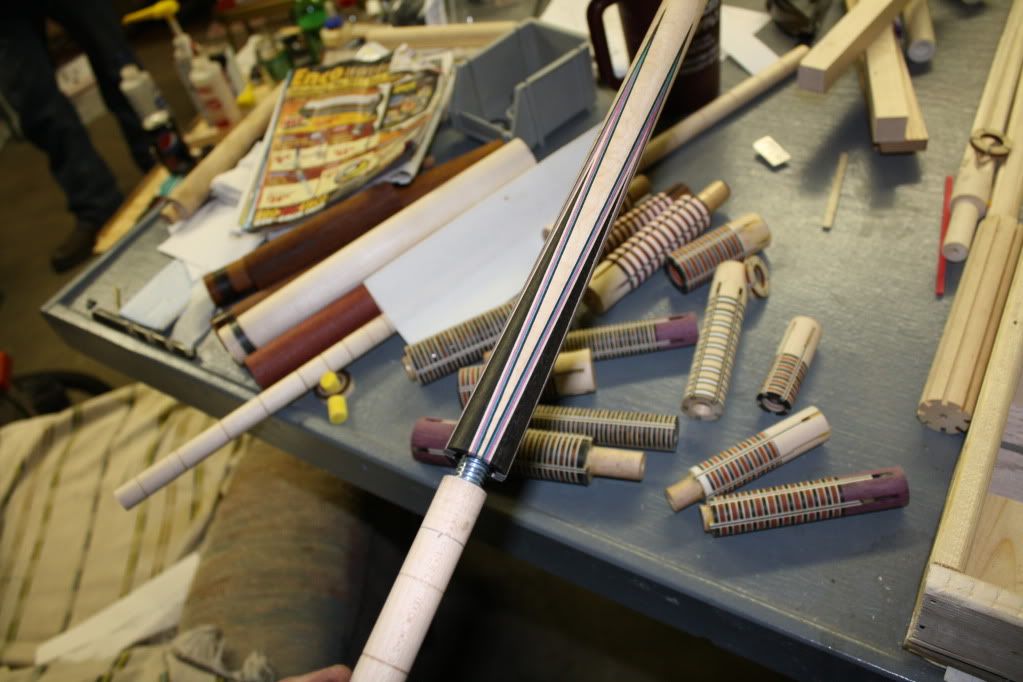JC
Coos Cues
I am getting started in cue building and have acquired a pretty good tooling start and mostly have been learning the fundamentals of each required skill and practicing a lot on scraps. I have also been reading all I can here in the archives and have a question about the "A" joint.
There has been much discussion here over the years with a lot of different ideas and techniques. I wonder why people don't use a simple tenon and a screw designed for the job instead of using threaded rod and trying to make wood behave like metal for those using a screw and not threading the wood itself.

This is what I'm talking about and they come in all lengths and diameters. Since all the screw does is act as an internal clamp for the glue and variable weight why not keep it simple? Probably a stupid question but wondering if there is a down side to using these other than they aren't fancy or hard to install and center? I have made a few test joints and drilled the hole about half way between minor and major diameter of the screws and the joints have all come out dead straight with a simple screwing of them together. Thanks for reading and any thoughts would be appreciated.
JC
There has been much discussion here over the years with a lot of different ideas and techniques. I wonder why people don't use a simple tenon and a screw designed for the job instead of using threaded rod and trying to make wood behave like metal for those using a screw and not threading the wood itself.
This is what I'm talking about and they come in all lengths and diameters. Since all the screw does is act as an internal clamp for the glue and variable weight why not keep it simple? Probably a stupid question but wondering if there is a down side to using these other than they aren't fancy or hard to install and center? I have made a few test joints and drilled the hole about half way between minor and major diameter of the screws and the joints have all come out dead straight with a simple screwing of them together. Thanks for reading and any thoughts would be appreciated.
JC

